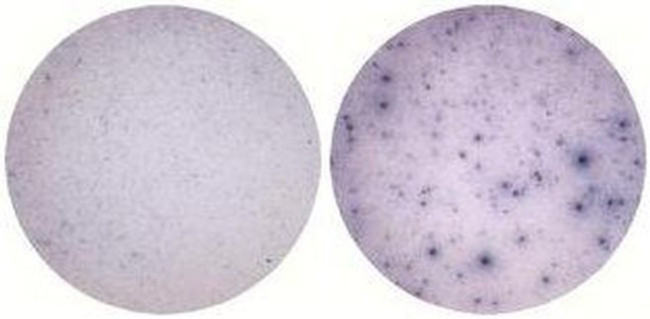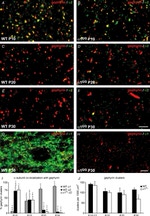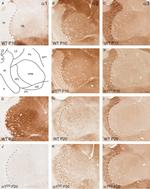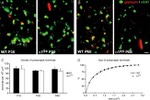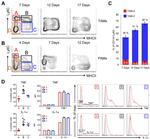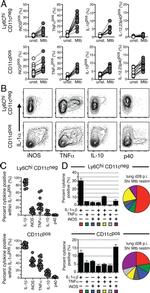Search
Invitrogen
IL-1 alpha Monoclonal Antibody (ALF-161), Functional Grade, eBioscience™
{{$productOrderCtrl.translations['antibody.pdp.commerceCard.promotion.promotions']}}
{{$productOrderCtrl.translations['antibody.pdp.commerceCard.promotion.viewpromo']}}
{{$productOrderCtrl.translations['antibody.pdp.commerceCard.promotion.promocode']}}: {{promo.promoCode}} {{promo.promoTitle}} {{promo.promoDescription}}. {{$productOrderCtrl.translations['antibody.pdp.commerceCard.promotion.learnmore']}}
Product Details
16-7011-85
Species Reactivity
Published species
Host/Isotype
Recommended Isotype Control
Class
Type
Clone
Conjugate
Form
Concentration
Purification
Storage buffer
Contains
Storage conditions
Shipping conditions
RRID
Product Specific Information
Description: The ALF-161 antibody reacts with mouse interleukin-1alpha (IL-1alpha). Mouse IL-1alpha, also called Lymphocyte Activating Factor (LAF), Endogenous Pyrogen (EP), Leukocyte Endogenous Mediator (LEM), and Mononuclear Cell Factor (MCF), is a 17 kDa factor produced by a wide variety of cells, including macrophages, dendritic cells, T and B cells. IL-1alpha is mostly cell-associated, with 23% amino acid homology with IL-1beta. The immune regulatory role of IL-1alpha is exerted on a wide range of cells including lymphocytes, epithelial cells and fibroblasts. In vivo, it induces hypotension, fever, and acute phase response.
Applications Reported:The ALF-161 antibody has been reported for use in ELISA capture, ELISPOT capture, neutralization, and intracellular staining for flow cytometry.
Applications Tested: The Functional Grade Purified ALF-161 antibody has been tested by LAL assay to verify low endotoxin levels, by ELISA, and in bioassay for neutralization of mouse IL-1 alpha bioactivity.
The ALF-161 antibody at 0.031 µg/mL has been found to inhibit by 50% the biological effects of 4.0 ng/mL mouse IL-1 alpha in a D10 cell proliferation assay. Detailed information and protocols about cytokine bioassays and in vitro cytokine neutralization using antibodies can be found in the BestProtocols® section.
The ALF-161 antibody has been tested as the capture antibody in a sandwich ELISA for analysis of mouse interleukin-1 alpha (IL-1 alpha) in combination with the biotin anti-mouse Interleukin-1 alpha (IL-1 alpha) polyclonal (13-7111) antibody for detection and recombinant mouse IL-1 alpha (14-8011) as the standard. A suitable range of concentrations of this antibody for ELISA capture is 1-4 µg/mL. A standard curve consisting of doubling dilutions of the recombinant standard over the range of 1000pg/mL - 8pg/mL should be included in each ELISA plate.
Storage and handling: Use in a sterile environment.
Filtration: 0.2 µm post-manufacturing filtered.
Purity: Greater than 90%, as determined by SDS-PAGE.
Endotoxin Level:Less than 0.001 ng/µg antibody, as determined by LAL assay.
Aggregation:Less than 10%, as determined by HPLC.
Target Information
IL-1 alpha (Interleukin-1 alpha) is a proinflammatory cytokine expressed by monocytes, macrophages, and dendritic cells. IL-1 alpha is coded by the IL1A gene and signals through two receptors, IL-1RI and IL-1RII, both of which are shared with IL-1 beta. IL1A is located on the q arm on chromosome 2 at position 13. IL-1 alpha plays an important role in innate host defense by triggering the production of other proinflammatory cytokines in target cells and initiating acute-phase responses. IL-1 alpha activity can be moderated by IL-1 Receptor Antagonist (IL-1RA), a protein produced by many cell types that blocks receptor binding through competitive inhibition. IL-1 alpha is a pleiotropic cytokine involved in various immune responses, inflammatory processes, and hematopoiesis. Further, IL-1 alpha is produced by monocytes and macrophages as a proprotein, which is proteolytically processed and released in response to cell injury and induces apoptosis. The IL1A gene and eight other interleukin 1 family genes form a cytokine gene cluster on chromosome 2. IL1 alpha regulates the activities of NF-kappaB and mitogen-activated protein kinases. IL-1 alpha can stimulate the expression of IL6 and cyclooxygenase-2 (PTGS2/COX-2), as well as enhance the production of nitric oxide (NO). High levels of IL-1 alpha are associated with several chronic inflammatory diseases including rheumatoid arthritis, psoriasis and multiple sclerosis.
For Research Use Only. Not for use in diagnostic procedures. Not for resale without express authorization.
Bioinformatics
Protein Aliases: CTLA8; IL 1 a; IL 1α; IL-1 alpha; IL17; IL1α; ILN; Interleukin; interleukin 17; Interleukin-1 alpha; Interleukin-17A; Interleukin1 alpha; RP23-160G19.8
Gene Aliases: Il-1a; Il1a
UniProt ID: (Mouse) P01582
Entrez Gene ID: (Mouse) 16175

Performance Guarantee
If an Invitrogen™ antibody doesn't perform as described on our website or datasheet,we'll replace the product at no cost to you, or provide you with a credit for a future purchase.*
Learn more
We're here to help
Get expert recommendations for common problems or connect directly with an on staff expert for technical assistance related to applications, equipment and general product use.
Contact tech support
